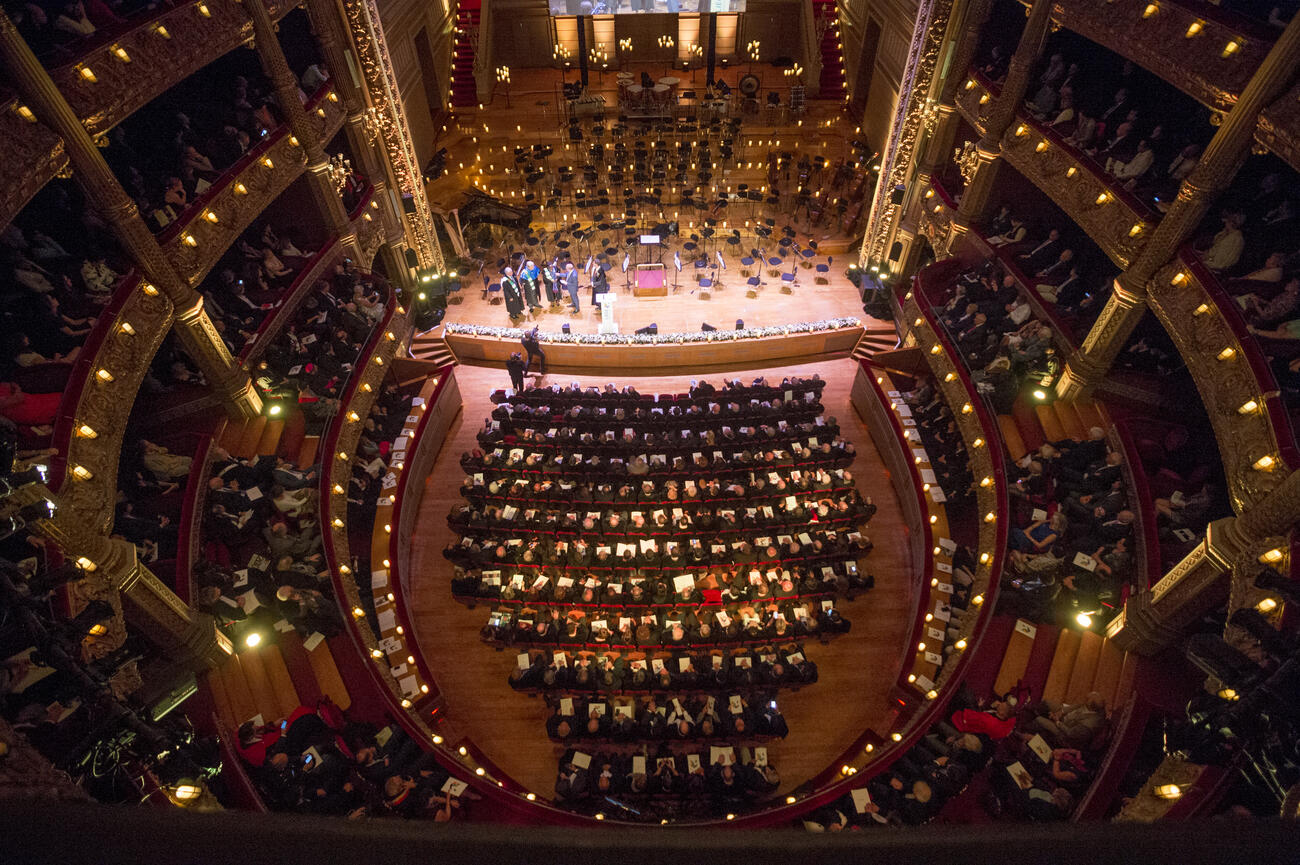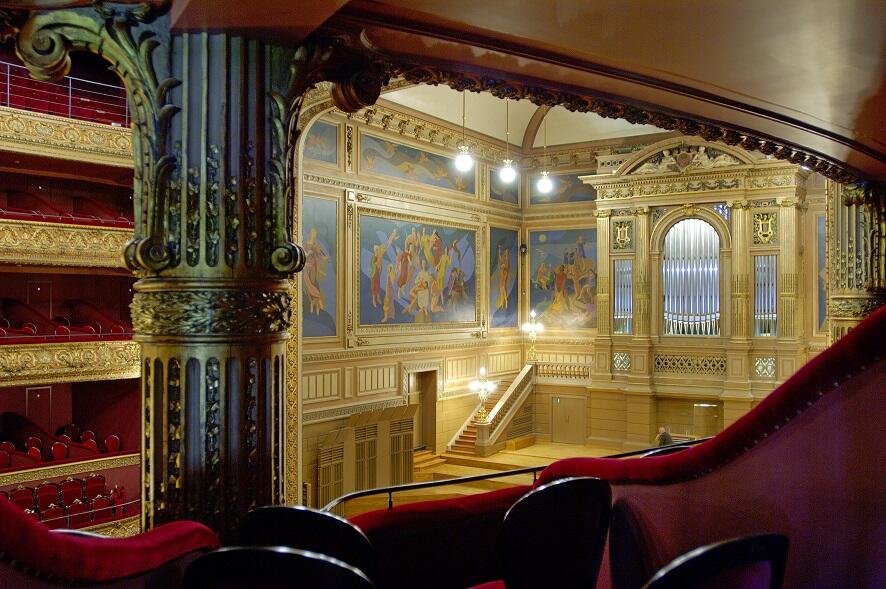La Salle Philharmonique de Liège
A significant example of 19th century architecture, the Salle Philharmonique de Liège was inaugurated in 1887.

Formerly known as the "Salle des Fêtes du Conservatoire", the current Salle Philharmonique de Liège was built at the behest of the Royal Conservatory of Music of Liège, which was flourishing at the time, and was designed in its eclectic Renaissance style by the architects Louis Boonen and Laurent Demany. Following its inauguration on 30 April 1887, with the involvement of Eugène Ysaÿe, it played host to some of the greatest artists of the late 19th century: Vincent d'Indy, Charles-Marie Widor, Ferruccio Busoni, Richard Strauss (who conducted his Don Juan and Also sprach Zarathustra there on 1 March 1896) and Gustav Mahler, who conducted his Second Symphony there on 22 January 1899. This was Mahler's first performance outside Germany. It was no doubt on the recommendation of Richard Strauss, who had heard the symphony in Berlin in 1895, that Dupuis invited Mahler to Liège, having conducted the Second Symphony himself for the first time on 6 March 1898.
The hall has also played host to composers from the twentieth century and up to the present day including Georges Auric, Olivier Messiaen, Iannis Xenakis, Luciano Berio, Astor Piazzolla, Heinz Holliger, John Cage, Ennio Morricone, Philippe Boesmans, Antoine Duhamel, Pascal Dusapin, Claude Ledoux, Bruno Mantovani, Éric Tanguy, Thierry Escaich and Éric Montalbetti.
Since September 2000, the Hall has been managed by the Orchestre Philharmonique Royal de Liège, performing its symphonic concerts there, as well as presenting organ and piano recitals, chamber music, world music and early music concerts. Boasting category B+ acoustics, the Hall is regularly used as a recording studio.
The Philharmonic Hall has a seating capacity of 1,129, divided into a parterre, a balcony, three rows of boxes and a 240-seat amphitheatre. The hall has a mixed design. In the auditorium, the architects opted for an Italian-style arched shape theatre, richly decorated with gilding and red velvet. The stage is a very large rectangular space modelled on German concert halls. The stage features a symphonic organ by Pierre Schyven (1888-1890) and murals by Liège painter Edgar Scauflaire (1952-1954). Influenced by cubism, these paintings represent Liège composers André-Modeste Grétry and César Franck.
With a seating capacity of 120, the Eugène Ysaÿe Foyer is another important area of the Salle Philharmonique, used for chamber music concerts, meetings and conferences

